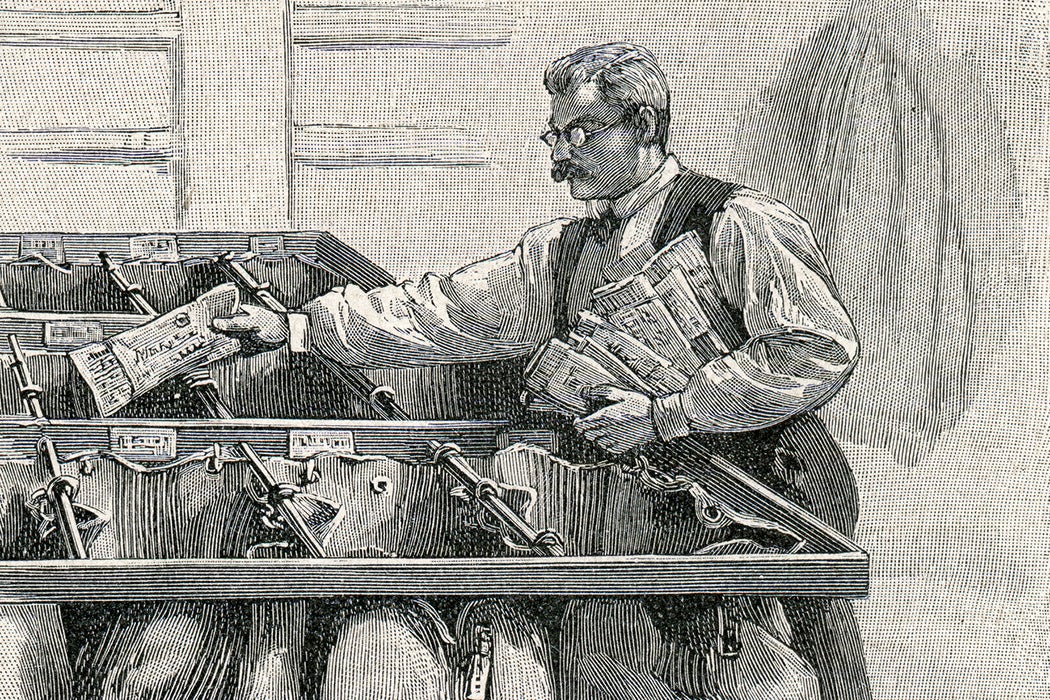In the early years of the American republic, the most prominent arm of the federal government was the post office. It wasn’t only the developing nation’s primary communications network: the national postal service was laying the foundations of the American tradition of communications confidentiality. These foundations were set a century before the Supreme Court began to interpret the Fourth Amendment as applying to private, personal communications, and long before there were any kinds of wires to tap.
Digital technologies have much reduced letter-writing, but the heritage of mail free from unreasonable or warrantless searches or surveillance has been extended into the digital realm.
“If today we see the principle of communications privacy as fundamental to the Fourth Amendment,” writes legal scholar Anuj C. Desai, “we have postal policymaker to thank, for it was through the post office, not the Constitution or the Bill of Rights, that early Americans first established that principle.”
Desai notes that the modern interpretation of the Fourth Amendment proscribing “warrantless ‘wiretapping’—intercepting a communication while the communication is taking place” dates to two 1967 Supreme Court decisions, Berger v. New York and Katz v. United States. These cases, which declared warrantless tapping of phone lines illegal, overturned the four-decade old precedent of Olmstead v. United States (1928). Olmstead allowed warrantless wiretapping of phones, but the “intellectual underpinnings” of the 1967 decisions stemmed from Justice Louis Brandeis’s famous dissent in Olmstead, in which he wrote that “to protect that right [to be let alone], every unjustifiable intrusion by the Government upon the privacy of the individual, whatever the means employed, must be deemed a violation of the Fourth Amendment.”
As Desai shows, Brandeis’s dissent had intellectual underpinnings in the Supreme Court’s 1878 Ex parte Jackson decision. Jackson was the first “case in which the Court ruled that the Fourth Amendment preserved a realm of communications privacy from government intrusion.” The Fourth Amendment makes no mention of communications, but in Jackson, the Court declared that the “Fourth Amendment precluded the government from opening sealed letters without a warrant.”
As it happened, that was post office policy from the beginning of the US Postal Service. The Post Office Act of 1792, the first major postal law enacted after the adoption of the Constitution in 1789, banned the opening of letters.
In the eighteenth century, state interference in the mails was standard in Europe. The British postal system, including in its colonies, was an “arm of the Crown.” Although postal officials took an oath to not open the mail—Benjamin Franklyn did so as a deputy postmaster general for the colonies in the 1750s—the British postal system actually served as an intelligence agency. It was, writes Desai, “very much the locus of activities we in the United States now associate with the Central Intelligence Agency and National Security Agency.” After news of the first battles of the American Revolution in 1775 reached Britain, for instance, all mail from America was opened. Desai explains how easy this was to do: this was before the envelope, and the waxes used to seal folded sheets could easily be broken (and re-applied).
To avoid loyalist postmasters and the so-called “parliamentary post,” American revolutionaries set up their own system of mail delivery for (public) newspapers and (private) letters. Newspaperman William Goddard’s mail network became the basis of the “constitutional post,” as the national post service was first called in the new republic.
Weekly Newsletter
Americans vowed their new country would be different from Britain and other European monarchies, even sometimes in cases of what we now call “national security.” In 1778, amidst the war with Great Britain, the Continental Congress shouted down an attempt by the President of the Congress to publicly open sealed letters sent to individual delegates from an enemy combatant.
When courts push back against governmental tapping of any “communications transmitted through a communications network,” we have the “constitutional post” to thank. (That government has devised ways, as in the Foreign Intelligence Surveillance Act, of getting both warrantless and warranted taps is another discussion.)
Support JSTOR Daily! Join our membership program on Patreon today.







